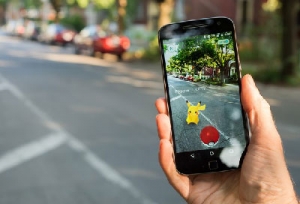VR/AR/MR, What’s the Difference?
or
How “XR” is the Beginning of the End – It’s about time.
Anatomy of Experience, by Howard Rose
Reality has been through a lot in the last few decades. The shift started back in the ’60s with the dawn of “Virtual Reality” (VR), but it took decades for most people to catch on that VR is more than science fiction. Today the term VR is used for anything you see on a screen strapped to your head that blocks out your view of the world.
Along the line, VR spawned “augmented reality” (AR) to describe using a small screen, like your mobile phone, to see virtual things overlaid on things in the real world. AR enables us to jog with zombies or chase Pikachu in Pokémon Go on your phone. Cool.
Turns out there’s a lot of territory between VR and AR, so somebody came up with MR for “mixed” or “merged” reality. People use MR as a kitchen sink for anything they can’t easily define, leaving us wanting for something clearer.
These terms, VR/AR/MR get even murkier when marketers start playing fast and loose with the jargon. Case in point, people routinely label their passive 360 video as “VR” because it’s seen on the same immersive headset. So “VR” starts to refer just to the viewing device, ceasing to convey any meaningful expectations to the human about to don the headset.
OK, but why do I care what you call it?
There’s something here way more interesting and important than merely the labels for a given device. The underlying problem with VR/AR/MR is not just that they are barely effective at differentiating technologies, but they give no useful insight into the quality of the digital experience for users.
As an alternative, let’s redraw the map to look from the human side.
My Digital Reality Matrix has two axes:
1. Synthetic to Augmented Axis: Covers the continuum from completely synthetic robots or VR headsets to digital enhancements that Augment and include the real world.
2. Internal to External Axis: Digital entities can range from totally outside of ourselves (External) or be very personal and connected to ourselves (Internal).
The Digital Reality Matrix
Wow! Such a useful matrix, but why do you say
“XR is the beginning of the end?”
I’m glad you asked. The new catch-all is on the rise: XR – an abbreviation which nobody seems to know exactly what it stands for, but think something like “experiential reality”, or just the mysterious variable: “Reality X.” The big story here is that the adoption of XR is basically a confession that the other terms (VR/AR/XR) are just not cutting the mustard. Tech changes to fast. There are too many edge cases. So XR is the beginning of the end of focusing on the tech instead of the experience. Someday soon XR will hopefully also become irrelevant as the lines between immersive technology and all other technologies blur into unrecognizable oblivion.
When that day comes, the Digital Reality Matrix will rise from obscurity and be there to serve you. On that day, tell ’em you saw it here first.
Godspeed.
© 2021 Howard Rose, all rights reserved





